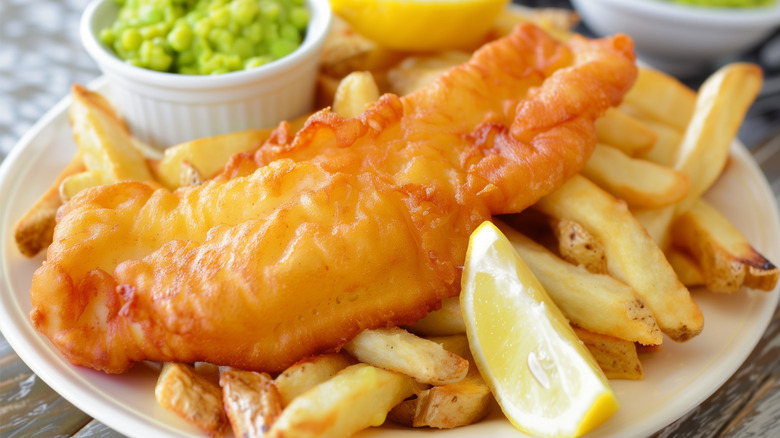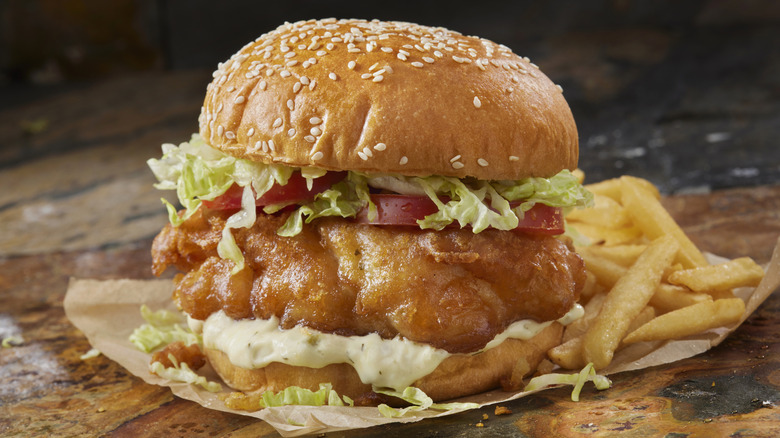Why Carbonated Drinks Are The Secret To The Perfect Fish Batter
Whether you're frying fish for a sandwich, tacos, or traditional English fish and chips, you want it to cook up light and crispy. The secret to achieving an airy crust with just the right crunch is making the batter with a bubbly carbonated drink like club soda, seltzer, sparkling water, or beer, as we do in our golden beer-battered fish and chips.
Carbonated beverages produce a light exterior by causing a reaction in the batter as it cooks, similar to how carbon dioxide creates bubbles in fizzy drinks. When the fish goes into screaming hot oil, the liquid's carbon dioxide is expelled within the batter, and it happens very quickly because of the intense heat. This produces tiny air-filled spaces that remain in place in the coating while it fries, rather than collapsing. Cold batter meeting hot oil makes this process happen even faster, so it's best to refrigerate the drink before making the batter. The bubbles in carbonated drinks also help keep the batter light by making it harder for the flour's proteins to stick together when the batter is mixed, so there's not a lot of toughening gluten produced.
The frying batter should be no thicker than a thin pancake batter, so add more flour or carbonated liquid if needed. Flour the fish before dunking it into the batter to help the all-important coating cling. Consider adding cornstarch or baking powder to the batter for an even airier boost.
More tips to make fried fish light and tasty
The reason we batter or bread fried foods in the first place — besides the fact that it tastes so good — is that the coating acts as a protective blanket, mostly preventing the hot oil from directly reaching the food, which could otherwise dry it out and make it tough. Instead, a more moderate, uniform heat penetrates the coating and cooks whatever's inside, while the hot oil dries the exterior and turns it golden brown.
To ensure that your fried fish that turns out light and delicious, make sure the frying oil reaches a hot enough temperature, between 350 and 375 degrees Fahrenheit. Otherwise, the fish will soak up too much oil and become greasy. Use a mild-tasting, firm white fish that will hold its shape and not break apart while cooking. Fish and chips traditionally use cod, but haddock, tilapia, and pollock — the versatile star of Burger King's Big Fish sandwich — are also great options.
Try using a lemon-flavored seltzer (without sugar) as your carbonated drink to infuse the batter with fish's traditional citrus partner, or stir in lemon juice instead. Add a sizzle of heat by mixing in hot sauce or cayenne pepper, or jazz it up with spices like paprika, garlic powder, onion powder, or seafood standby Old Bay seasoning. You could even use Old Bay on your side of french fries instead of just salt.


